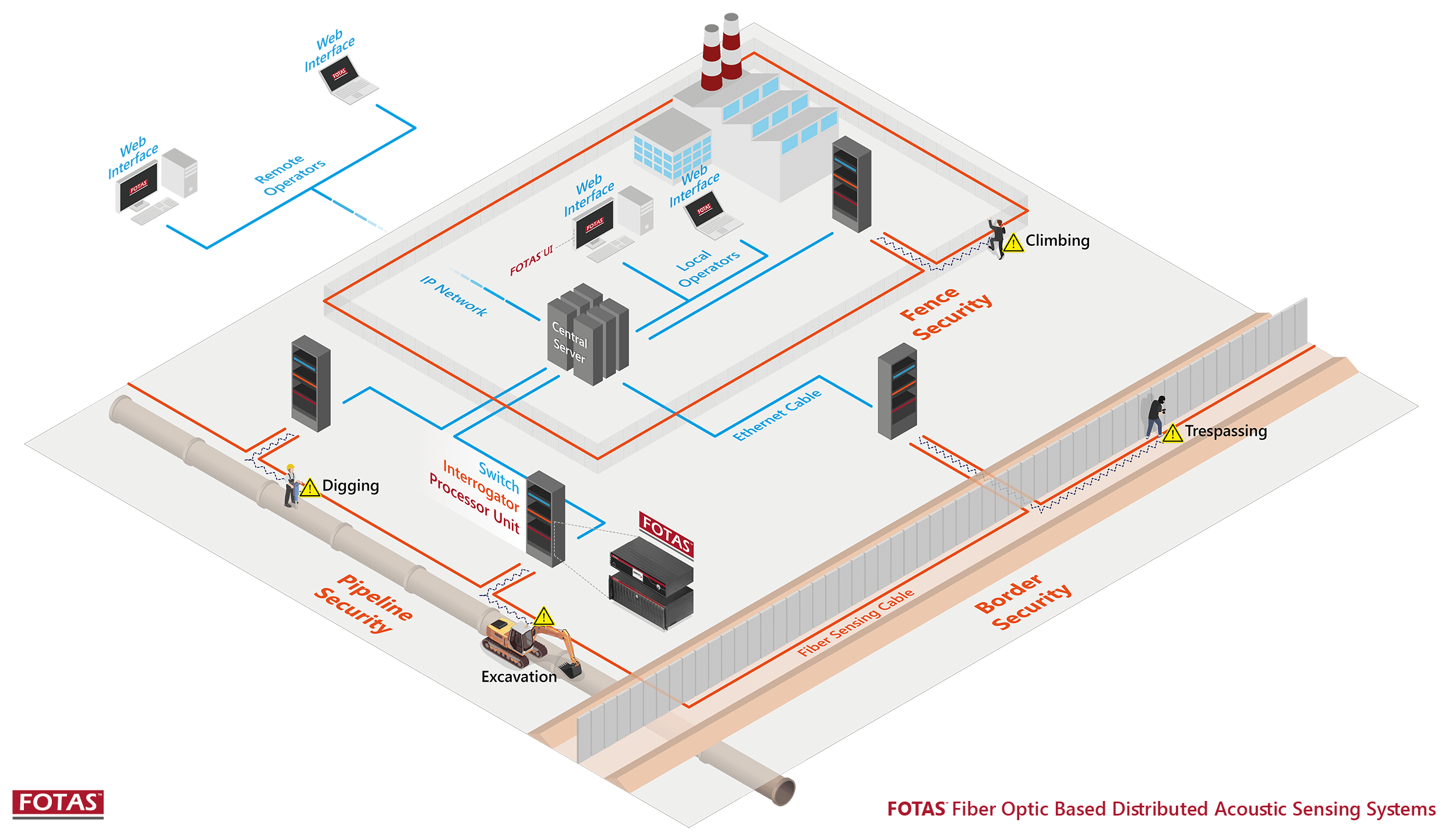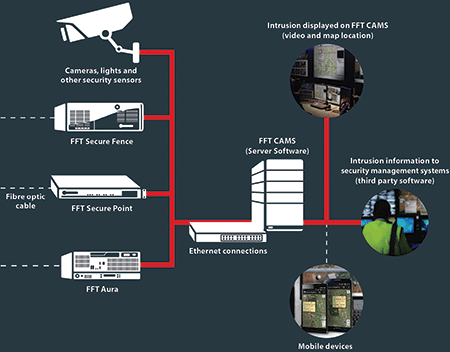The Ultimate Guide to Fiber Optic Protection Systems for Your Service
In an era where protection worries are extremely important for businesses, recognizing the ins and outs of fiber optic technology can be transformative. This overview details exactly how incorporating fiber optic safety systems not only improves data defense but additionally supplies advantages like resistance to disturbance and real-time tracking abilities.
Comprehending Fiber Optic Technology

The core of a fiber optic cable television consists of a slim glass or plastic center, bordered by a cladding layer that shows light back right into the core. Single-mode fibers are designed for long-distance transmission, while multi-mode fibers are ideal for shorter distances, usually utilized within structures.
Optical fiber are not just faster but likewise much more secure than standard circuitry. Their inherent resistance to electro-magnetic interference and the difficulty of tapping right into the signal without discovery make them a preferred option for companies focusing on information honesty and safety. As companies increasingly count on secure and efficient interaction systems, understanding fiber optic innovation comes to be crucial for educated decision-making.
Secret Benefits of Fiber Optic Protection
When considering safety and security alternatives for a business, the benefits of fiber optic systems are especially engaging. Fiber optic technology supplies exceptional data transmission rates and bandwidth capacity, making it ideal for managing high-resolution video clip feeds from monitoring cameras. This capacity guarantees that protection workers obtain real-time information, boosting total response times to potential protection threats.
Additionally, fiber optic cords are naturally immune to electro-magnetic interference, which can compromise the stability of traditional copper-based systems. This resistance makes sure that the information transferred remains secure and undisturbed, providing a more reputable security infrastructure. In addition, fiber optics are less prone to physical damages, as they are made from glass instead than steel, minimizing upkeep prices and downtime.
Fiber optic systems supply improved cybersecurity functions, consisting of security capacities that protect delicate information from unauthorized access. Collectively, these benefits make fiber optic security systems a robust option for businesses looking for to improve their protection actions.
Installment Refine and Factors To Consider
Considering the complexities involved, the setup procedure of fiber optic safety and security systems needs cautious planning and implementation. The first step includes a thorough site analysis to identify optimum areas for cabling and tools. This assessment ought to think about ecological variables, existing infrastructure, and possible susceptabilities.

Additionally, the installation should abide with neighborhood structure codes and sector standards. This might consist of collaborating with numerous stakeholders such as structure managers, IT groups, and security personnel to ensure seamless combination with existing systems.
Post-installation, strenuous testing is needed to validate system performance and identify any type of issues that might develop. By focusing on these factors to consider during the installation process, businesses can ensure a robust and efficient fiber optic safety and security system that meets their details safety and security demands.
Newest Innovations in Fiber Optic Safety
Current advancements in fiber optic modern technology have substantially improved the capacities of protection systems for organizations. One of one of the most remarkable advancements is the combination of fiber optic sensing units that can detect resonances and invasions along the border of a center. These sensing units supply real-time monitoring, enabling rapid feedback to potential breaches.
Additionally, the growth of distributed fiber optic picking up technology permits the constant surveillance of huge areas with a single fiber cable. This method not just lowers installation prices but additionally improves the integrity of checking systems by removing the demand for several, separate sensing units.
Furthermore, advancements in multiplexing strategies have allowed companies to Visit Your URL transmit substantial quantities of information over fiber optic networks, improving the capabilities of video security systems. High-def video feeds can now be sent out over long ranges without loss of quality, browse this site making certain that safety workers have accessibility to clear and actionable details.
Lastly, the use of expert system (AI) in conjunction with fiber optic systems is changing risk discovery. AI formulas can assess data from fiber optic networks to determine unusual patterns or actions, permitting aggressive safety actions. These technologies jointly represent a considerable jump onward in fiber optic safety technology.
Choosing the Right System for Your Organization
Selecting the appropriate fiber optic safety and security system for your organization is crucial for making sure optimum defense and satisfaction. To make an enlightened option, assess your specific protection needs, considering aspects such as the dimension of your properties, the nature of your operations, and possible vulnerabilities.
Begin by examining the degree of protection needed; for example, high-risk settings might necessitate sophisticated systems with incorporated surveillance and invasion discovery abilities. Next off, consider scalability; as your company grows, your security system need to can broadening to suit raised demands without significant overhauls.
Furthermore, examine the integrity and performance of numerous systems. Try to find providers with established reputations and customer testimonials that vouch for their service quality. It's additionally advisable to ask about the technology's compatibility with existing infrastructure, making certain a seamless assimilation process.
Verdict
In conclusion, fiber optic safety and security systems provide a durable service for improving organization security infrastructures. The most recent innovations better strengthen the efficiency of these systems, guaranteeing that organizations stay safe and versatile in an ever-evolving risk landscape.